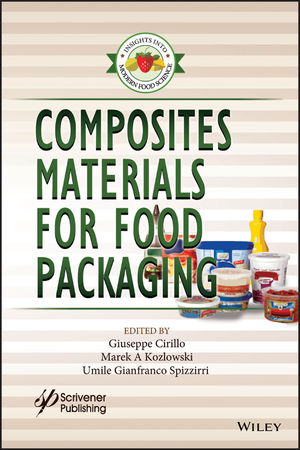Four your consideration
A packaging expert looks at four key microwave packaging trends for 2010.

There’s proof that when the going gets tough, the tough get going. Despite this period of economic turmoil and uncertainty, smart companies are redoubling their efforts and activities. And the best are determined not just to survive, but prosper.
This is evident in the packaging world. At a time when there are more factors influencing every food purchase decision, some food processors are using innovative combinations of microwave foods and packaging to regain lost “share of stomach.”
Here’s one observer’s take on the top packaging innovations that could impact the microwave food market during 2010.
1. Look for continued proliferation in style and varieties of packages using controlled venting to capture and constructively use the energy in vaporized moisture to steam cook foods.
Looking for product advantages offering improved quality, nutrition and/or time? It’s a matter of maintaining a hot, moist atmosphere around a food. Of course, this does not apply to foods that need browning or crisping.
More complex, multi-component foods and larger portions complicate the challenge, and a clear area of opportunity is to develop hybrid packages that steam some food components – while they crisp others. There will be more activity in this area, and consumers will like the results. This offers opportunities not unlike what steam cooking has done to rejuvenate the frozen vegetable segment.
2. Food safety issues are an increasingly emotional issue for consumers, but that should not prevent processors from pursuing the tandem goals of quality and safety in convenient microwave foods.
Some question whether safety concerns should preclude the use of raw or partially cooked protein components in microwavable foods. Consumers increasingly crave freshness, and for some foods, reheating from fully cooked won’t be good enough to entice them into repeat purchase. Watch for new products containing raw seafood as well as other new offerings containing more raw poultry or red meat.
Of course this requires tight control of the protein sourcing and packing processes. Likewise, these types of offerings need carefully designed packages – with attention to food layout and material performance across varying types of ovens.
It’s here too, that we may see researchers turn to susceptors for more than their traditional browning and crisping functions. These new applications may include susceptors to adjust heat and ensure the package achieves minimum cooking temperatures.
Playing off earlier work in the United Kingdom and Europe, I also think we can expect to see more chilled foods and meals – some with raw protein – for microwave cooking. These new packages depend on barrier structures, modified atmosphere packaging and a high degree of control over the cold chain distribution.
Ultimately, U.S. processors will need to study and adapt distribution models that have been successful in smaller countries. Regional distribution may be required to gain the needed levels of control.
3. Published patents and applications demonstrate continued industry interest in using susceptors to better control heating dynamics. The market is ripe for breakthrough technology that extends browning and crisping to popular foods that haven’t been compatible with microwave preparation.
A perennial microwave target is any high moisture, breaded food. Today, these types of items have to be oven baked or deep fried to satisfy consumers’ taste and texture expectations. New experiments are combining food formulation and unique susceptor configurations and we can expect to see expanded activities in this area.
We also expect to see susceptor technology applied to more new products, such as larger pizzas; or to multi-package heating processes. In the latter case, we’re talking about instances where the consumer wants the ability to cook several packages simultaneously without compromising crisping performance.
Ultimately, some of these new products or process improvements will require combination structures that employ both susceptor and shielding technologies.
4. It doesn’t necessarily require innovation but the market does need more packaging that communicates time/power relationships to the microwave oven for a more optimized heating cycle. This requires a solid understanding of cook performance in a variety of power levels and oven configurations.
Ovens with this capability have been discussed for years. I think we’ll see more industry pressure on oven manufacturers to agree on standards and offer compatible ovens. This is an industry opportunity. Consumers – those who value simplicity and predictability in cooking pre-packed foods and meals – will want to purchase new microwaves. This bodes well for microwave food sales as well as the related packaging. Linking new oven and package technologies to increased food safety would be an obvious and major benefit.
The sustainability story
Ready for a fifth prediction? There is an untapped opportunity for the microwave packaging community to address sustainability concerns.
It’s important, however, to tell the entire story and take a holistic view of the issue.
On the surface, microwave packaging requires more complex structures. It often incorporates multiple package components to achieve the desired functionality. This can give consumers the impression of excess or over packaging.
That said, we have seen companies pursue some source reduction measures and other limited opportunities. For example, there are some frozen products in dual-ovenable plastic trays containing post-consumer PET. Of course, recovered beverage bottles are subjected to a multi-stage, intensive cleaning process. It requires a “non-objection letter” from the Food and Drug Administration, in which FDA specifies food types and conditions of use for each processing facility and process utilized.
This innovation tracks work to increase post-consumer content in carbonated soft drink containers. I believe this technology will expand but will be limited by availability and cost of these grades.
Realistically, I think we can expect little activity in recycling post-consumer microwave packages – simply because few locales collect and separate the varieties of packaging structures used. Microwave packages comprise a very small fraction of the waste stream and generally incur significant food contamination.
Ready for the more holistic view? The important message is that microwave cooking and reheating should be recognized as a low-energy consumption food preparation technique. Electric energy suppliers have touted energy savings of up to 70 percent or more with microwave ovens – compared to conventional cooking techniques.
I think we’ll soon see some rigorous, published studies that show that net energy input and greenhouse gas emissions from food packaged and microwave heated are lower than that of similar foods packed and prepared using conventional cooking techniques.
Timothy Bohrer, Pac Advantage Consulting LLC, works with both flexible and rigid structures in plastic, paper and composite packaging and the materials that form the foundation of these package types. Readers may contact him at (773) 268-2232 or by e-mail at tim@pacadv.com
Looking for a reprint of this article?
From high-res PDFs to custom plaques, order your copy today!





